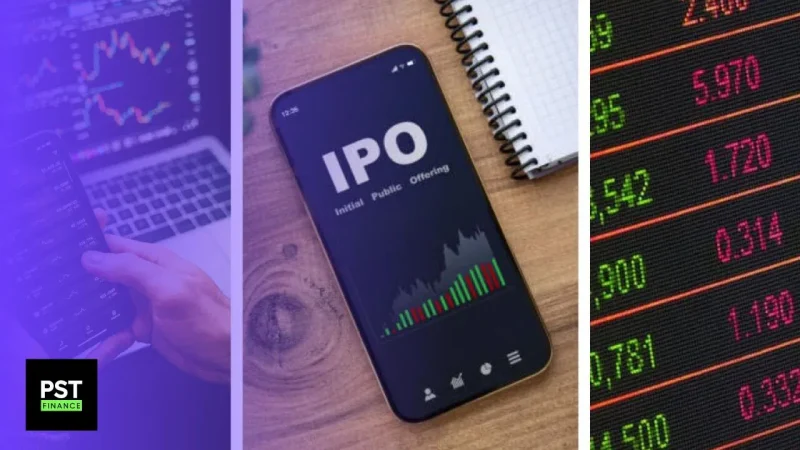The Federal Reserve’s plans to lower interest rates renewed the confidence in the U.S. stock market, and that is making many people think that 2024 is shaping up to be a year of deal-making activity, like mergers, acquisitions, and IPOs.
As a retail investor, you probably often dream about getting into the next big thing. But let’s face it, it can be very challenging to navigate the complexities of the M&A market or predict which IPOs will soar to new heights. Here are 4 ETFs that will do all the work for you and help you take advantage of the deal-making environment.
The IPO Market in 2024
IPOs are always exciting for investors. They can offer you the chance to invest in companies that offer trendy new products, like discount retailer Shein, or Kim Kardashian’s Skims, which are both likely to go public in 2024. IPOs can also be a chance to invest early in the next big tech company. For example, Reddit, while already an established social media platform, is now considering going public.
IPOs, and SPACs as well, surged in 2020 and 2021, when interest rates were near zero, but the IPO market cooled off in 2022 and 2023 when the Federal Reserve started bumping up the rates. Therefore, it’s likely that IPO activity will increase with the interest rates decreasing. But, investing in IPOs may not be easily accessible to the majority of retail investors, and IPOs that are accessible may be difficult to research, which can add an extra layer of risk.
IPO ETFs
Some ETFs allow you to invest in multiple IPOs, without the need to spend a lot of time picking stocks and researching each company one by one. But, it’s important to note that these ETFs don’t purchase IPO shares at their initial prices, but they can make the IPO market more accessible for investors who may not have the time or resources to research new issues.
First Trust U.S. Equity Opportunities ETF (FPX)
This ETF tracks a market-cap-weighted index of the 100 largest U.S. IPOs over the first 1,000 trading days for each stock. Eligible stocks are purchased after the close on the 6th trading day after the IPO, and then get sold on the 1000th trading day, for a holding period of roughly 4 years. This is the largest IPO ETF, with total assets worth $716.25 million, which indicates a more stable asset base and better liquidity for investors.
Its holdings are spread out across multiple sectors, which is good for diversification. But, its largest holdings are in the tech and industrial sectors, with 39.47% and 22.67%, respectively. Its top holdings are Carrier Global (NYSE: CARR), Samsara Inc. (NYSE: IOT), and Uber (NYSE: UBER). It has a one-year daily total return of 10.61%, an expense ratio of 0.61%, which is higher than the average ETF expense ratio at 0.47%. It currently trades at around $95.91.
Renaissance IPO ETF (IPO)
Even though FPX is larger, as IPO’s total assets have a market value of $168.20 million, IPO has been outperforming recently, returning 32.8% over the past year compared to 20.1% for broader U.S. equity benchmarks. IPO also tracks a market cap-weighted index of recent U.S.-listed IPOs, but the difference between it and FPX is that it acquires issues within 90 days or sooner after the IPO and sells after 3 years. So, it gives a longer time-frame.
What makes this ETF unique is that it invests in the largest and most liquid U.S.-listed newly public stocks with 0% overlap with the S&P 500. Its holdings are also spread out across multiple sectors, offering great diversification. Its largest holdings are in the tech and financial services sectors, with 36.30% and 22.36%, respectively. It also has 16.01% in the consumer discretionary sector, and its top holdings include Kenvue (NYSE: KVUE), Coinbase (NASDAQ: COIN), and Roblox (NYSE: RBLX). As for its one-year daily total return, it’s 13.35%, and its expense ratio is close to FPX’s, at 0.60%. It currently trades at around $34.21.
M&As ETFs
M&As could also gain a boost thanks to the expected low interest rates environment. This is because lower interest rates mean lower borrowing costs for companies looking to make acquisitions. Additionally, there are always undervalued companies in the market, even if the stock market does fairly well, which means that there’s always room for M&A activity.
IQ Merger Arbitrage ETF (MNA)
This ETF has an AUM of $318.7 million, and works by tracking an index that uses a merger arbitrage strategy with long exposure to takeover targets, and short exposure to broad global equity indexes. In other words, the fund takes long positions in stocks that are reported targets of takeovers or acquisitions, in order to capitalize on the difference between the amount paid by the acquirer to the target company’s shareholders and the actual value of the shares.
Merger arbitrage strategies may be difficult for retail investors to employ on their own, so this ETF makes them more accessible. The ETF’s holdings are also diversified, but its largest holdings are in the energy and consumer discretionary sectors, with 20.29% and 16.22%, respectively. Its top holdings include Energy Select Sector SPDR ETF (NYSEARCA: XLE) and Schwab U.S. REIT ETF (NYSEARCA: SCHH). It has a dividend yield of around 1.20%, and a somewhat high expense ratio of 0.77%. It currently trades at around $31.
AltShares Merger Arbitrage ETF (ARB)
ARB tracks a global U.S. dollar-hedged index that uses a merger arbitrage strategy of providing long exposure to takeover targets and short exposure to the acquiring company. This ETF might not be the top choice for everyone, as it focuses on emerging markets, but it is unique because it’s the first merger arbitrage fund that hedges foreign currency exposure, and it hedges its FX risks against the U.S. dollar using forward currency or futures contracts.
It has an AUM of $58.98 million, and it rebalances and reconstitutes twice a month. To manage risk, ARB may also hold positions in cash when the number of takeover targets are not met or when deals are consummated. Its holdings are diversified, with its largest holdings being in the healthcare and energy sectors, with 31.99% and 16.64%, respectively. Its top holdings include Spirit Realty Capital (NYSE: SRC) and Splunk Inc. (NASDAQ: SPLK). As for its one-year daily total return, it’s 3.88%, and its expense ratio is also 0.77%.
Industry-Specific ETFs
Another good tip for investors who want to invest in M&As is to look at specific industries that have a lot of deal-making activity. Industries like this are the biotechnology and pharmaceutical industries. In fact, there has been a persisting trend throughout 2023 of M&As in the biotech and pharmaceutical sectors.
In just October of 2023, nine of the 20 biotech acquisitions for the entire year worth $1 billion or more were announced, according to BioPharma Dive. These acquisitions boost the stocks of the companies involved. For example, RayZeBio (NASDAQ: RYZB) soared by 101% when news of the Bristol Myers Squibb’s (NYSE: BMY) takeover was announced.
ALPS Medical Breakthroughs ETF (SBIO)
If you want to get into this sector with an ETF, the ALPS Medical Breakthroughs ETF (SBIO) could be a good choice since it offers exposure to biotechnology stocks that have one or more drugs in Phase II and Phase III U.S. FDA trials. This strategy reduces the likelihood of early-stage failures in preclinical or Phase I trials, and there’s a lot of potential for stock price growth once the drug is officially approved. The ETF’s top two holdings are Cerevel Therapeutics (NASDAQ: CERE) and Vaxcyte Inc. (NASDAQ: PCVX). As for its one-year daily total return, it’s 1.72%, and relatively low expense ratio, at least compared to other ETFs we talked about, at 0.50%.
Understanding the Risks
It’s important for you to know that investing in IPOs and M&As can be very risky a lot of the time, as many IPOs end up losing steam just a few days later, same for M&As. Therefore, you need to be aware of the risks. Do your own due diligence about the ETFs you plan to buy, or even seek a professional’s help in order to be aware of the potential risks.
It’s also important to know that general market risks affect nearly every investment, so you should diversify your investments, and this diversification should go beyond industries and companies.
Disclaimer
Please visit and read our disclaimer here.









